How Kintiga uses Generative AI to accelerate HTA Value Dossier Compilation
60%
less dossier writing time
80%+
of AI interpretations require zero editing
10+
endpoint types covered and growing
What our clients say
Heike Kielhorn-Schönermark
Chief Operating and Transformation Officer
“When we screened every step of the value dossier process, endpoint result interpretation clearly stood out as the ideal point of leverage for AI: a high volume, highly repetitive, zero-error-tolerance task.
Together with idalab, we have built the first-ever AI tool capable of turning complex endpoint results into a convincing interpretations, cutting down manual workloads by more than 60%.
Within weeks, our medical writers couldn’t imagine life without it. All the way from strategy to implementation, idalab has been an outstanding partner: deep-thinking, fast-doing, and never not fun to work with.”
Challenges
EU HTA: Tight timeline, high workload, increased complexity
Small data transfer mistakes jeopardize entire launch timelines
Highly qualified medical writing teams demand modern digital workflows
Solution
EPRI is an AI-powered Software Tool for Endpoint Result Interpretation
Together with Kintiga’s team of experienced medical writers, we have built EPRI, the first-in-class AI software for endpoint result interpretation.
Using large language models, EPRI automatically translates complex statistical result tables into a convincing and compliant interpretation for HTA value dossiers.
Trained on 2000+ High-quality Endpoint Result Interpretations
To bring your value story across crystal clear, EPRI was trained on more than 2000+ high-quality expert-curated study outcome interpretations, covering more than 20 different types of endpoints.
As of today, already 80% of generated interpretations require zero human editing, cutting down writing time by 60% on average.
A Tool Medical Writers Love to Use Every Day
Designed by medical writers for medical writers: EPRI’s user interface is built to support the high-volume high-accuracy challenge its users face.
Intelligent text highlighting and quality metrics pinpoint any inconsistencies and ensure no hallucinations make it into the dossier.
In a nutshell
Partner with us to improve your workflows with AI
We build tailored AI solutions for market access, pricing, pharmacovigilance, medical affairs and post-market activities – from strategy and concept development to implementation and operations.
Outsource your table interpretation workflows to Kintiga
Building on the EPRI software, Kintiga offers a managed service to seamlessly take care of your endpoint result interpretation workloads, allowing your team to focus on strategic work.
Frequently asked questions
Compliance, Security &
Service Delivery
-
Client data security is one of our top priorities, and the entire EPRI technology stack has been developed following a security-by-design approach.
At the infrastructure-level, technical access to the EPRI application is restricted at the network-level to Kintiga sites and its VPN. The entire cloud application is part of Kintiga’s private cloud, subject to regular data security audits. The LLM provider and other cloud services have been carefully selected to ensure all data remains private.
Access management for Kintiga staff is provided through the organization-wide IAM, with privileges granted for individual users at the client project level (siloed project teams). The respective procedures are embedded in Kintiga’s project delivery SOPs.
-
Yes. The EPRI Software does not process any personal data.
-
Yes. The EPRI software falls into the low-risk category.
-
During initial development, we have meticulously assessed EPRI’s output on more than 2000 training examples, using a combination of semi-automatic comparisons and human expert oversight and feedback.
During the application of EPRI, for each generated interpretation, medical writers must provide mandatory quality feedback. This feedback is evaluated on a bi-weekly basis to measure performance and prioritize continuous improvements.
-
To ensure high-quality error-free interpretations, we take a three-pronged approach to eliminate hallucination risk:
Constraining the context of the text-generation to a small scope which is well-covered by the training data in combination with highly conservative settings for probabilistic text generation.
Rule-based consistency checks between input and output as part of the generation pipeline as an automatic QA measure.
User interface geared towards convenient, efficient and highly granular human QA by medical writers.
-
No. At the moment, EPRI is available for third parties only as a managed service through Kintiga.
The EPRI Solution: Capabilities & Technology
-
Understanding complex table structures with multi-level and merged rows and column headers is indeed one of the several major challenges in developing such an application.
The key to make this work is to transform the input data into a sequential representation (abstracting away the formatting) that is as unique as possible so as to make the best use of the training data.
-
EPRI supports German and English, and we are currently preparing to expand into other European languages.
-
EPRI has been trained and meticulously evaluated on a set of 10 endpoint types, which have been prioritized to cover the majority of the writing time for a typical HTA dossier. We are continuously working on expanding the supported endpoint types.
-
In addition to the EPRI application, we have developed a local companion application (internally known as “the combine harvester”) which extracts complex table structures from any PDF documents.
Even more seamlessly, EPRI can also import data from SPSS, Stata and SAS.
-
The EPRI backend is agnostic of the underlying Large Language Model and works with all commodity LLM providers. The LLM is only a small part of the overall text generation pipeline.
Clients idalab
Learn more















